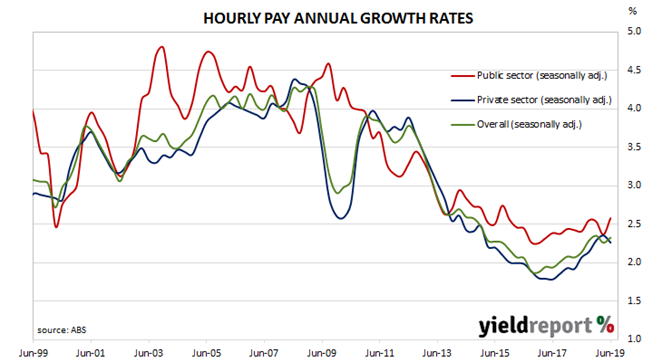After unemployment increased and wage growth slowed during the GFC, a resources investment boom prompted a temporary recovery back to nearly 4% per annum. However, from mid-2013 through to the September quarter of 2016, the pace of wage increases slowed to around 2% where it remained until mid-2017. Since then, the rate of wage growth has crept up slowly. The latest report on aggregate wages indicates this slow process is continuing.
According to the latest wage price index (WPI) figures published by the ABS, hourly wages grew by 0.6% in the June quarter, slightly higher than the +0.5% increase in the March quarter and just above the expected +0.5% increase. The year-on-year growth rate slipped back from 2.4% in the March quarter to 2.3% after revisions were made to previous quarters’ figures.
Westpac senior economist Justin Smirk said, “We still expect wage inflation to drift higher from here; our forecasts have it peaking around 2.75% in 2020 but given how well contained wage inflation is across the nation and between sectors, even this modest increase looks optimistic…”
ANZ senior economist Catherine Birch noted a major component of the quarter’s increase had come from the Victorian public health sector which had been attempting to catch up with wages in other states. “So the headline figure, which isn’t very positive in itself, masks some more concerning trends.”

